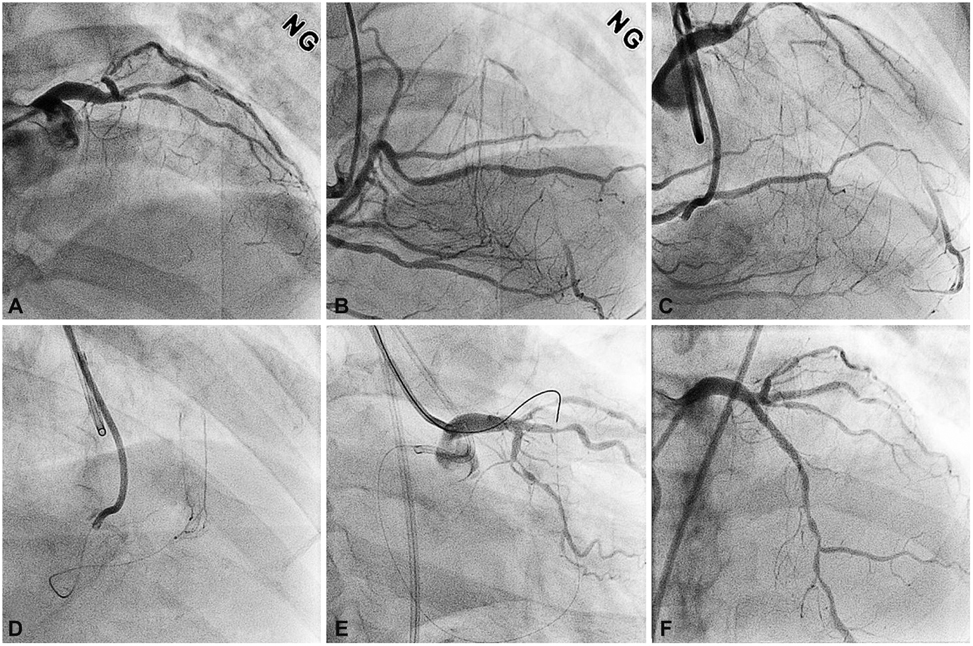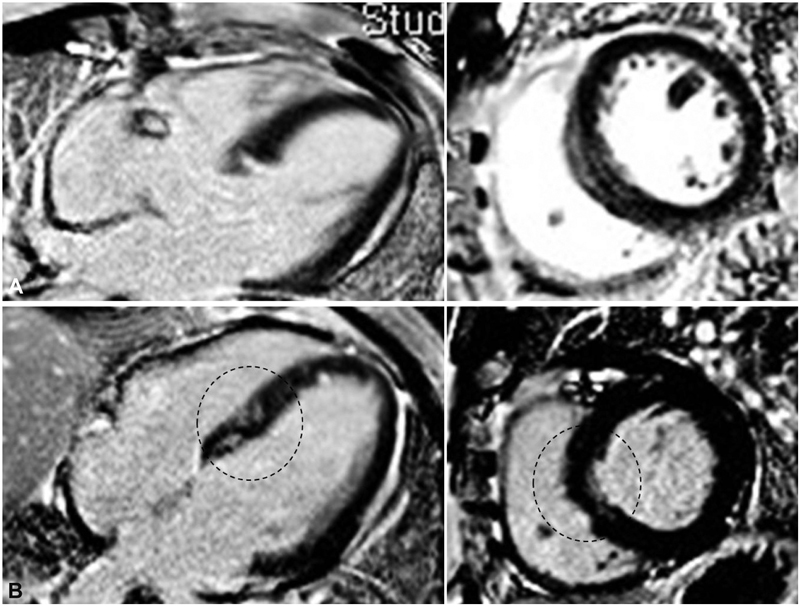Korean Circ J.
2011 Dec;41(12):747-749. 10.4070/kcj.2011.41.12.747.
Periprocedural Myocardial Infarction After Retrograde Approach for Chronic Total Occlusion of Coronary Artery: Demonstrated by Cardiac Magnetic Resonance Imaging
- Affiliations
-
- 1Cardiovascular Center, Chungbuk National University Hospital, Cheongju, Korea.
- 2Cardiac and Vascular Center, Samsung Medical Center, Sungkyunkwan University School of Medicine, Seoul, Korea. hcgwon@skku.edu
- 3Cardiovascular Center, Sejong General Hospital, Bucheon, Korea.
- 4Cardiovascular Center, Jeju Hanmaum Hospital, Jeju, Korea.
- KMID: 1776251
- DOI: http://doi.org/10.4070/kcj.2011.41.12.747
Abstract
- A retrograde approach through the collateral channels was recently proposed as one of the most promising current techniques for percutaneous coronary intervention of chronic total occlusion in coronary arteries (CTO). This report describes the case of a 68-year-old man in whom CTO was successfully crossed with a wire by the retrograde approach using septal collateral, but the patient suffered from a complication with septal myocardial infarction demonstrated by cardiac magnetic resonance imaging.
Keyword
MeSH Terms
Figure
Reference
-
1. Safian RD, McCabe CH, Sipperly ME, McKay RG, Baim DS. Initial success and long-term follow-up of percutaneous transluminal coronary angioplasty in chronic total occlusions versus conventional stenoses. Am J Cardiol. 1988. 61:23G–28G.2. Hamm CW, Kupper W, Kuck KH, Hofmann D, Bleifeld W. Recanalization of chronic, totally occluded coronary arteries by new angioplasty systems. Am J Cardiol. 1990. 66:1459–1463.3. Surmely JF, Tsuchikane E, Katoh O, et al. New concept for CTO recanalization using controlled antegrade and retrograde subintimal tracking: the CART technique. J Invasive Cardiol. 2006. 18:334–338.4. Chung SH, Kim MH, Yu LH, et al. Initial experience of retrograde wire approach in coronary chronic total occlusion intervention. Korean Circ J. 2009. 39:228–235. doi: 10.4070/kcj.2009.39.6.228.5. Surmely JF, Katoh O, Tsuchikane E, Nasu K, Suzuki T. Coronary septal collaterals as an access for the retrograde approach in the percutaneous treatment of coronary chronic total occlusions. Catheter Cardiovasc Interv. 2007. 69:826–832.6. Werner GS, Ferrari M, Heinke S, et al. Angiographic assessment of collateral connections in comparison with invasively determined collateral function in chronic coronary occlusions. Circulation. 2003. 107:1972–1977.7. Saito S. Different strategies of retrograde approach in coronary angioplasty for chronic total occlusion. Catheter Cardiovasc Interv. 2008. 71:8–19.
- Full Text Links
- Actions
-
Cited
- CITED
-
- Close
- Share
- Similar articles
-
- Right Ventricular Myocardial Infarction due to Right Coronary Artery Total Occlusion Originating From the Distal Left Circumflex Artery
- Cardiac MRI
- Sudden Cardiac Arrest with Acute Myocardial Infarction Induced by Left Subclavian Artery Occlusion in a Patient with Prior Coronary Artery Bypass Surgery
- MR Imaging of Ischemic Heart Disease
- One-stop Diagnosis of Ischemic Heart Disease Using Cardiac MRI



